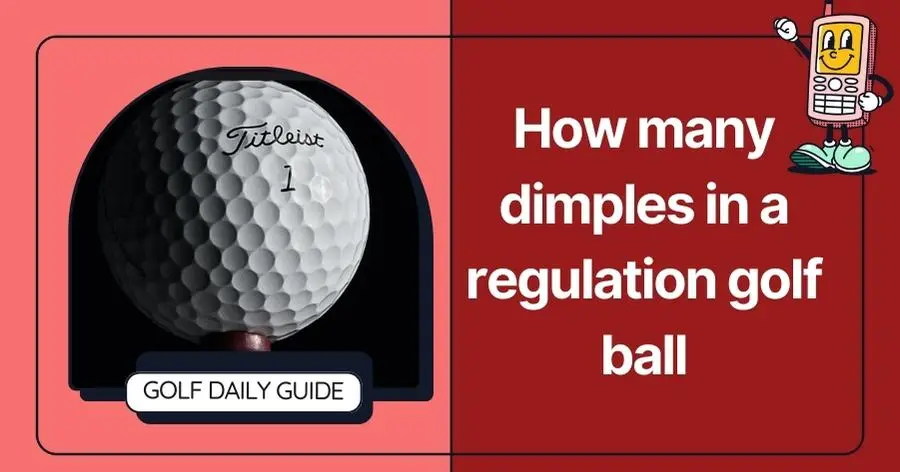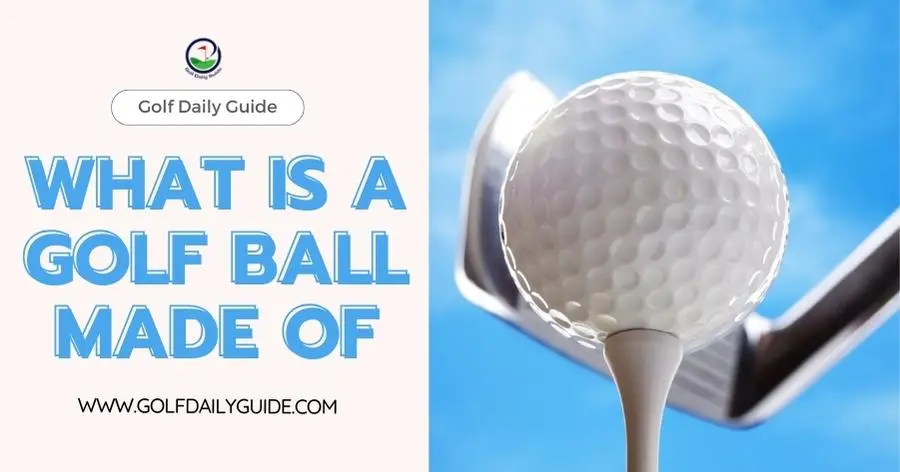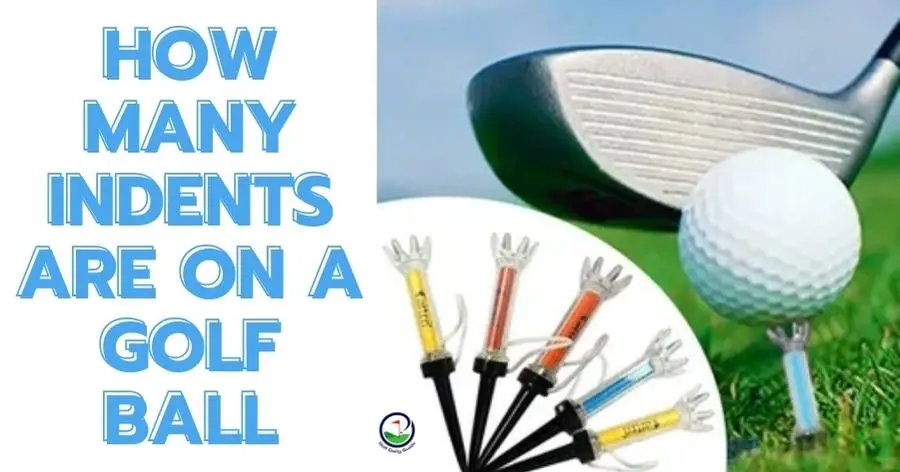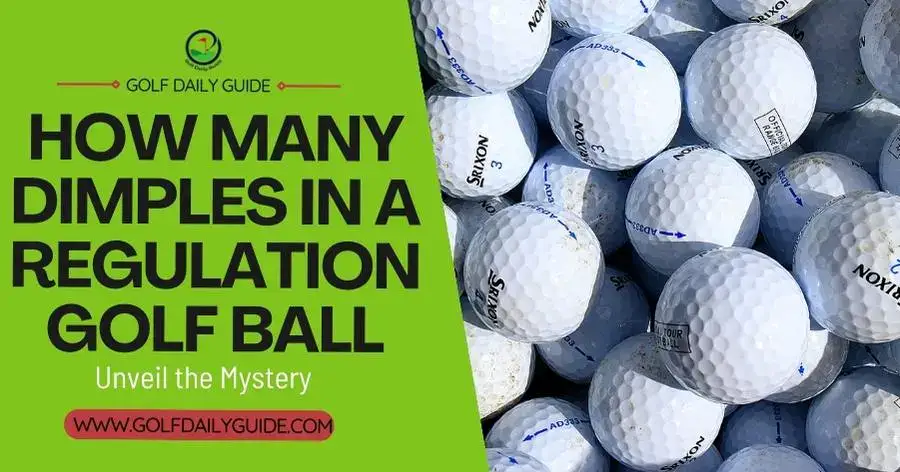A regulation golf ball typically has 336 dimples. The standard number can vary slightly among manufacturers.
Golf enthusiasts often seek specifics, like the number of dimples on a golf ball, understanding that such features impact the ball’s aerodynamics. Do you know How many dimples there are in a regulation golf ball?
The dimple pattern is crucial; it influences how air flows around the ball and affects the distance and trajectory of a shot.
While the 336-dimple pattern is common, some balls may have anywhere from 300 to 500 dimples, each calculated to perfect the ball’s performance.
These spherical dimples are a prime example of engineering meeting sports science to enhance the game for players worldwide.
Why do golf balls have dimples?
Knowing this fact is not only interesting for trivia but also provides insight into the technical aspects of golf equipment design.
1. The Enigma Of Golf Ball Dimples
The secret to a golf ball’s flight lies in its dimples. These small indents make the ball unique. They affect how far and straight it flies.
Most people don’t know how many dimples a regulation golf ball has. Surprisingly, the number can vary.
2. The Evolution Of Dimple Design
Golf balls have not always had dimples. Early golf balls were smooth. Golfers noticed old, nicked balls flew better. This discovery led to the golf balls we know today.
- Featheries: The first golf balls, filled with feathers.
- Gutta-Percha balls: Early rubber balls, still smooth.
- Post-1905 designs: Introduction of dimpled balls for better flight.
3. Dimples And Aerodynamics
It’s all about air. Dimples on a golf ball create turbulence. This reduces air resistance. A smoother ball can’t fly as far. Dimples are a game-changer.
- Dimple Factor Effect on Flight
- Dimple Pattern
- Determines how air flows around the ball.
- Dimple Depth
- Deep or shallow affects lift and drag.
- Total Dimples
- Affects overall turf interaction and flight.
In golf, the right ball can make all the difference. A ball with more dimples may not always be better. Manufacturers tailor dimple designs to influence performance.
Typically, a regulation golf ball has between 300 and 500 dimples. The common number is around 336. Each design aims to improve the ball’s steadiness and distance.
Perfecting golf ball flight involves understanding dimples. Each dimple plays a role in aerodynamics. Golfers look for the best combination for their playing style.
How many dimples in a regulation golf ball?
Think a golf ball is just a small sphere peppered with random dimples? Think again. Dimple count affects a golf ball’s flight and stability as it soars through the air.
Surprising as it may seem, these tiny indentations play a massive role in the game, influencing everything from trajectory to distance.
Golf balls have 300 to 500 dimples on average. This isn’t a random number. Engineers test and perfect dimple patterns to ensure optimal performance.
Here is what you might find:
- Most common average of 336
- Some reach up to 500 for specialized play
Brands design these dimple counts after rigorous testing and refinement. Every dimple counts when it comes to your golf ball slicing through the wind.
Not all golf balls are created equal. Different brands boast unique dimple designs and patterns, leading to diverse aerodynamics and golf experiences.
Here’s a quick overview:
- Brand Average Dimple Count
- Titleist Pro V1 352
- Callaway Chrome Soft 332
- Bridgestone Tour B X 330
Different counts lead to unique flight characteristics. A Titleist may fly differently from a Callaway. Select a ball that complements your playing style and conditions.

Remember, choosing the right golf ball optimizes your game. Pay attention to dimple count and brand variations to find your perfect match on the green.
1. Manufacturing The Perfect Sphere
Crafting a golf ball is an art that mixes science and precision. Each ball’s design directly affects its flight and stability.
One crucial aspect is the number of dimples. Let’s dive into how manufacturers ensure each golf ball is a perfect sphere.
2. Precision In Production
The making of a golf ball is a process where every detail matters. Dimples on a golf ball play a key role. They reduce air resistance and allow the ball to fly further.
The standard golf ball has 336 dimples. This number can vary slightly based on the design. Brands experiment to find the best configuration for optimal flight.
3. Quality Control Measures
Manufacturers take steps to make sure every ball is up to standard. The technology ensures uniformity in dimple patterns.
Machines check the dimple depth and uniformity across thousands of balls. Consistency is crucial for performance. These control methods guarantee that each ball you hit has the perfect number of dimples.
- Dimple Counts Found in Golf Balls 332 336
- Affects on Performance Longer distance Better control
- Meticulous inspections – Each ball is checked for perfection.
- High-speed cameras – Capture and verify dimple structure.
- Automated sorting – Separates any balls with imperfections.
- Impact Of Dimples On Golf Ball Performance
What is a golf ball made of?
The surface of a golf ball might not look complex, but the dimples are key to its performance. These small indentations play a huge role in how far and straight the ball flies.
Let’s dive into the specifics of how dimples impact a golf ball’s journey from the tee to the green:
1. Flight Distance And Stability
Dimples on a golf ball create a thin layer of air. This layer reduces drag as the ball spins and soars through the sky. A smooth golf ball without dimples would struggle to fly half as far.
The dimples help lift the ball, allowing it to travel greater distances. The pattern and number of dimples ensure consistent flight and stability, even in windy conditions. Golfers rely on this to align their shots precisely.
2. Spin Rate And Dimple Depth
Dimples aren’t just about the number; depth contributes to performance too. A deeper dimple can increase the spin rate of the golf ball.
The higher spin helps golfers control their shots, especially during short games when precision is critical.
Factors like landing angle and green side control improve dramatically with the right dimple design. Manufacturers tweak this delicate balance to optimize the ball for different playing styles and conditions.
3. Regulatory Standards For Golf Balls
Every golfer knows that the golf ball plays a vital role in their game. Regulatory standards ensure each ball offers a fair play condition. These regulations govern everything from weight to the number of dimples.
4. The Role Of Usga And Ra
The United States Golf Association (USGA) and the RA set the standards for golf balls. These organizations test and approve balls for tournament play. Their rules ensure no player has an unfair advantage.
5. What is the diameter of a golf ball?
A regulation golf ball must meet specific criteria. The criteria encompass size, weight, shape, and dimple design.
- Size: The diameter cannot be less than 1.680 inches.
- Weight: The mass cannot exceed 1.620 ounces.
- Shape: It must be symmetrical and spherically perfect.
Dimples on a golf ball affect how it flies. More dimples can mean less drag and a longer flight. Most regulation balls have between 300 and 500 dimples.
This number can vary based on the brand and model. But, all designs aim to meet performance standards set by the USGA and R&A.
- Dimple Count Examples
- Brand and Model
- 336 Titleist Pro V1
- 383 Nike RZN Black
- 392 Callaway Chrome Soft
- Myths And Misconceptions
When we talk about golf, many believe in myths that seem true but lack facts. One such area brimming with myths is the dimple patterns on a regulation golf ball.

Let’s separate fact from fiction:
Dimple Count Myths
Let’s look at some myths surrounding the number of dimples on a golf ball. More dimples mean more distance: A common misconception is that balls with more dimples always fly farther.
Standard dimple count: Many assume a specific number, like 336, is standard. It’s not always the case.
Same dimples in all balls: Another myth is that all golf balls have identical dimple patterns. However, this varies greatly.
We’re here to clear the air and bust these common myths.
Dimple numbers vary across brands and designs, affecting flight and distance differently. A standard count does not exist; the range is usually between 300 to 500 dimples.
Dimple patterns are unique to each ball type, and designed for specific performance traits. Dimples on golf balls influence the aerodynamics significantly.
Not all golf balls are created equal, and the perfect dimple count for one player might not work for another. Understanding the science behind it can help you choose the right ball for your game.
What is the size of a golf ball?
Have you ever wondered why golf balls have those small indentations? The answer lies in the fascinating science behind dimple patterns, which play a crucial role in how a golf ball behaves in flight.
Let’s delve into the design and aerodynamic principles that make these dimples so essential to a golfer’s game:
1. Symmetry In Design
Dimples on a golf ball are not placed randomly. They follow a symmetric pattern that is key to the ball’s performance.
The symmetry ensures that no matter how the ball spins, it maintains a consistent flight path. This consistency is vital for golfers to predict the ball’s behavior in various playing conditions.
2. Bold Symmetric patterns:
- Hexagonal
- Pentagonal
- Octahedral
- Advanced Computational Dynamics
Developing the optimal dimple pattern for a golf ball involves advanced computational dynamics.
Scientists use sophisticated computer programs to simulate airflow and predict how dimples will affect the ball’s trajectory. This allows manufacturers to fine-tune the ball’s performance before it hits the market.
Let’s take a look at the factors involved:
- Factors
- Influence
- Dimple Depth
- Alter ball’s lift and drag
- Dimple Diameter
- Influence airflow detachment
- Total Count
- Affect turbulence and stability
3. Computational tools
- CFD Analysis (Computational Fluid Dynamics)
- Simulation Software
- Wind Tunnel Testing
- Custom Golf Balls And Dimple Innovation
Golf may seem simple, but it’s full of surprises. Did you know that dimples are big players in your golf game? Let’s dig into custom golf balls and how new dimple designs can change the way we play.
How many indents are on a golf ball?
Personalized golf balls aren’t just about looks. As players seek an edge, custom dimple patterns have entered the game. Dimples affect how the ball flies. Each pattern aims to perfect flight and control.

- Better grip in the air, meaning straighter shots.
- Improved distance control for power hitters.
- Unique feel on the greens, suiting personal play styles.
- Experimental Designs In Golf
Innovation doesn’t stop. Golf ball creators keep experimenting. They hope to find the magic design that brings max performance.
- Experiment Type Goal
- Variable Dimple Depths
- Custom flight paths for precision shots
- Diverse Dimple Sizes Better energy transfer for speed boost
- Hexagonal Patterns
- Reduce drag for extra yardage
Each new design could lead to breakthroughs. Golfers everywhere watch and wait for the next big thing in golf ball tech.
Choosing The Right Golf Ball For Your Game:
The quest to perfect your golf game often starts with choosing the right golf ball. Each element of the ball’s design can impact your performance.
Did you know a regulation golf ball has around 300 to 500 dimples? These dimples affect flight, speed, and spin. Understanding this can significantly influence your game.
Matching Dimple Patterns With Playing Style:
Not all golf balls are the same. Different dimple patterns work better for different playing styles. Players should consider their swing speed and desired ball trajectory when selecting a golf ball.
Some patterns might reduce drag and increase distance, while others provide better control and a more stable flight.
- High Swing Speed: Look for a ball with more dimples to reduce air resistance.
- Controlled Flight: A ball with shallower dimples can improve control and handling.
- Slow Swing Speed: Fewer, larger dimples can help keep the ball in the air longer.
- Top Picks For Amateur And Professional Players
Every player wants the best ball for their game. Here are the top picks tailored for amateur and professional players:
- Level
- Ball Type
- Features
- Amateur
- Two-piece balls
- Durable, affordable, and provide extra distance
- Professional
- Multi-layered balls
- Increased control
- spin, and feel
It’s important for amateurs to focus on balls that offer durability and distance, often found in two-piece construction. Professionals, on the other hand, might prioritize a multi-layered ball for better control and spin.
Frequently Asked Questions On How Many Dimples In A Regulation Golf Ball?
What Is The Standard Dimple Count On Golf Balls?
Most regulation golf balls have around 300 to 500 dimples, with 336 being a common standard.
Why Do Golf Balls Have Dimples?
Golf ball dimples reduce air resistance, allowing the ball to travel further by improving its aerodynamic properties.
Can Dimple Design Affect Golf Ball Performance?
Yes, the number and pattern of dimples can influence flight trajectory, distance, and stability of a golf ball’s performance.
Are More Dimples Better In Golf Balls?
Not necessarily; the performance depends on the optimal balance between dimple number, depth, and pattern for the desired ball behavior.
How Are Golf Ball Dimples Measured?
Dimples on golf balls are measured by their depth and diameter, influencing the aerodynamics and overall ball flight characteristics.
Related Post
Why golf cart cranks but won’t start
What should my golf cart charger read when fully charged
What did you shoot in golf
How to winterize electric golf cart
What degree is a ping utility wedge
Bottom Line About How Many Dimples In A Regulation Golf Ball?
Understanding golf ball dimples is essential for any enthusiast. Typically, a regulation golf ball features about 300 to 500 dimples.
This design optimizes flight stability and distance. Embrace this knowledge to choose the right ball and improve your game. Keep swinging and scoring!












